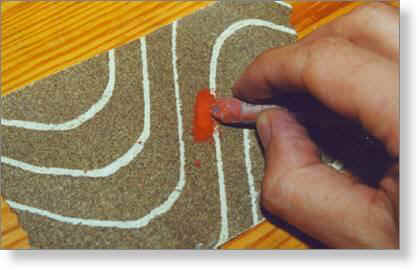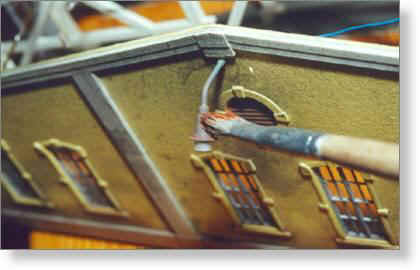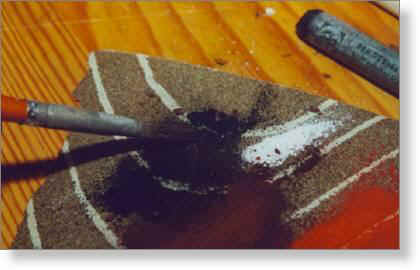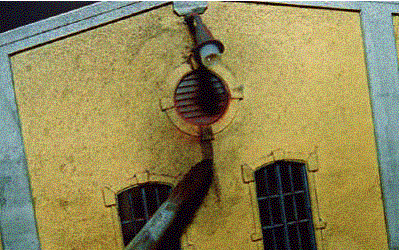|
One of the major differences between the
real world and the world on your layout is the fact that the real world
is much dirtier. Everything that is not brand new has been affected by
usage and weather. These marks give us a sensation of 'reality'. A model
railroad can be made to look a lot more realistic if we weather a little
bit here and there too.
That doesn't mean that you must dip everything in black paint or buy an expensive airbrush. You can also use pastels for weathering. This method is cheap and very easy to learn. Moreover, it is possible to undo the weathering if you are not satisfied. You can use this method to weather locomotives, cars, houses, factories, almost everything. 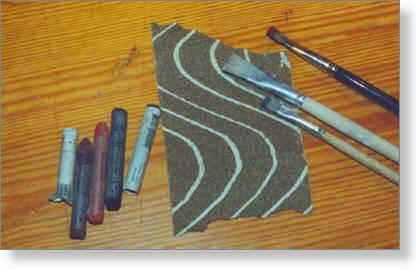
What do you need?
How to do it
You take the pastel with the color you want to use for weathering. When you want to apply various layers on top of each other (e.g. dust, rust and soot), you should start with the lightest color and finish with the darkest one. Prepare your paintwork by making fine pastel dust by grinding the pastel on the sandpaper.
Dip the stiff brush in the pastel dust and apply it to the model. The more pressure you apply, the thicker the layer of pastel dust becomes. It is best to work from the bottom to the top first and apply the second layer from the top to the bottom. When you are not satisfied, you can wipe off the dust with some effort or wash it off with water. Pay attention to where you apply the dirt. In real life dirt gathers in specific places because of gravity, wind and rain. Look at examples of real objects and use photographs. If you look around for details when walking through the city, you will soon develop a real sense for dirt!
A somewhat different technique is painting with the pastel dust. For this, you use a normal paintbrush and wet it. You roll the brush through the dust to let it maintain its pointed shape.
Use the paintbrush to paint traces of dirt on the model, that appear to have been caused by the rain. Do not apply too much pressure, because you easily overdo the effect. In this way you can also imitate traces of leaks and spilled oil. Put a little bit of Micro Satin varnish over the oil trace to make it shine like real oil. When you are finished you can spray the model with varnish to protect it. But once you have done this, you can never undo the weathering anymore. So, try a lot of things and do not be scared off easily. Good luck!
|
||||||||||||||||||||||||||
